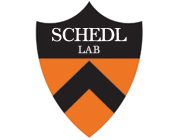Functional dissection of the developmentally restricted BEN domain chromatin boundary factor Insensitive
Publication Year
2019
Type
Journal Article
Abstract
BACKGROUND: Boundaries in the Drosophila bithorax complex delimit autonomous regulatory domains that activate the parasegment (PS)-specific expression of homeotic genes. The Fab-7 boundary separates the iab-6 and iab-7 regulatory domains that control Abd-B expression in PS11 and PS12. This boundary is composed of multiple functionally redundant elements and has two key activities: it blocks crosstalk between iab-6 and iab-7 and facilitates boundary bypass.
RESULTS: Here, we have used a structure-function approach to elucidate the biochemical properties and the in vivo activities of a conserved BEN domain protein, Insensitive, that is associated with Fab-7. Our biochemical studies indicate that in addition to the C-terminal BEN DNA-binding domain, Insv has two domains that mediate multimerization: one is a coiled-coil domain in the N-terminus, and the other is next to the BEN domain. These multimerization domains enable Insv to bind simultaneously to two canonical 8-bp recognition motifs, as well as to a ~ 100-bp non-canonical recognition sequence. They also mediate the assembly of higher-order multimers in the presence of DNA. Transgenic proteins lacking the N-terminal coiled-coil domain are compromised for boundary function in vivo. We also show that Insv interacts directly with CP190, a protein previously implicated in the boundary functions of several DNA-binding proteins, including Su(Hw) and dCTCF. While CP190 interaction is required for Insv binding to a subset of sites on polytene chromosomes, it has only a minor role in the boundary activity of Insv in the context of Fab-7.
CONCLUSIONS: The subdivision of eukaryotic chromosomes into discrete topological domains depends upon the pairing of boundary elements. In flies, pairing interactions are specific and typically orientation dependent. They occur in cis between neighboring heterologous boundaries, and in trans between homologous boundaries. One potential mechanism for ensuring pairing-interaction specificity is the use of sequence-specific DNA-binding proteins that can bind simultaneously with two or more recognition sequences. Our studies indicate that Insv can assemble into a multivalent DNA-binding complex and that the N-terminal Insv multimerization domain is critical for boundary function.
Keywords
Journal
Epigenetics Chromatin
Volume
12
Issue
1
Pages
2
Date Published
01/2019
ISSN Number
1756-8935
Alternate Journal
Epigenetics Chromatin
PMID
30602385

